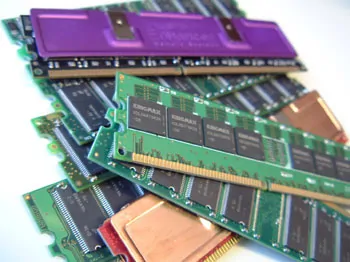Last modified 01/26/2024
How RAM memories works ?:

One of the first RAM memories was the magnetic core one, developed in 1949 and 1952; it was used in big computers until the development of integrated circuits was finished. In 1969, the first RAM memories, which were designed based on silicon semiconductors, had an integrated 3101 of 64 bits and produced by Intel, were distributed. In the year 1979, the DRAM memory of 1 kilobyte was launched, that would make history in memories, because the usage of magnetic core memories was been suppressed. After that, each year the performance and the capacity of these memories has been improved, making their usage more and more necessary in high level computers.
Nowadays, the most used memory is the RAM SRAM type, which is a static one and based on semiconductors, it is capable of storing data while it is been fed, making unnecessary to refresh the data when the memory cells are been store, but if the electric energy is interrupted, the stored data will be lost. Another type of memory is the RAM DRAM, which is a random access electronic memory; it is mainly used in the random memory and in the system’s principal memory, it is dynamic due to the fact that, for storing a data, it has to check it and reload it itself for short periods of time, it does it really fast and it contains millions of storing positions. However, it is also a volatile memory, meaning that whenever there is an electric interruption, the stored information is lost.
Another very important and necessary kind of memory is the ROM, it comes integrated in the computer mother plaques and the information it holds cannot be lost or modified, because it contains relevant information for the system, as well as for the computer, meaning that there is stored fabric information and the parameters that it has to follow.
It is true that sometimes computers require more RAM memory than the one installed, which is why the system has a support method for those cases, called the RAM Swapping. Through this method, the system forces the occupation of the RAM memory into the hard drive, but though temporal exchanges known as beat up, this might be prejudicial for the system when we are running heavy programs because it reduces its performance in 15 percent.
Nowadays, the RAM technology is advancing very much, the newest RAM memory prototype is the DDR3, this new technology has overcame the DDR2 en data transfer velocity, because it is twice as fast and has a band wide more adequate for current processors such as the Quad Core, for the reason that implies that the voltage that it uses does not go over the 1.8 of voltage, according to this, it can be the most efficient solution for current computers and for the future’s operative systems.